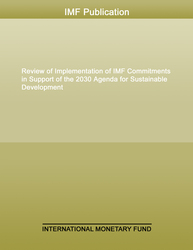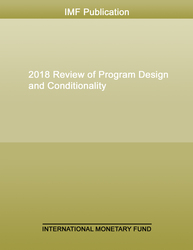
Debt Vulnerabilities And Financing Challenges In Emerging Markets And Developing Economies—An Overview Of Key Data
Debt Vulnerabilities And Financing Challenges In Emerging Markets And Developing Economies—An Overview Of Key Data
READ MORE...
Volume/Issue:
Volume 2025
Issue 002
Publication date: February 2025
ISBN: 9798229002264
$5.00
Add to Cart by clicking price of the language and format you'd like to purchase
Available Languages and Formats
| English |
Prices in red indicate formats that are not yet available but are forthcoming.
Topics covered in this book
This title contains information about the following subjects.
Click on a subject if you would like to see other titles with the same subjects.
Exports and Imports , Public Finance , IMF SRDSF risk rating , IMF-World Bank LIC-DSF , debt vulnerability , financing capacity , IMF-World Bank LIC-DSF database , debt challenge , PPG debt flow , debt burden indicator , Debt burden , Debt service , Debt sustainability , Global , Middle East and Central Asia , Sub-Saharan Africa , Asia and Pacific
Also of interest
Summary
Many emerging markets and developing economies face elevated debt vulnerabilities and financing needs. Following the 2020-21 surge in debt levels associated with the COVID-19 shock, and the subsequent tightening in global financial conditions, many emerging markets and developing economies (EMDEs)1 are grappling with rising debt service burdens that squeeze the space available for development spending. Pandemic-induced deficits have declined, and debt levels have stabilized and are projected to remain stable or slightly decline under staff’s baseline assumptions. However, many EMDEs are confronting high costs of financing, large external refinancing needs, and a decline in net external flows amid important investment and social spending needs. To help address these challenges, countries would benefit from actions, both at domestic and international level, to proactively expand their capacity to finance development spending. There are also important risks to the baseline that will require careful monitoring. This paper aims to help inform the international debate on these issues by providing factual data and insight on the debt vulnerabilities and financing pressures facing EMDEs.
Copyright © 2010 - 2025
Powered by:
AIDC



